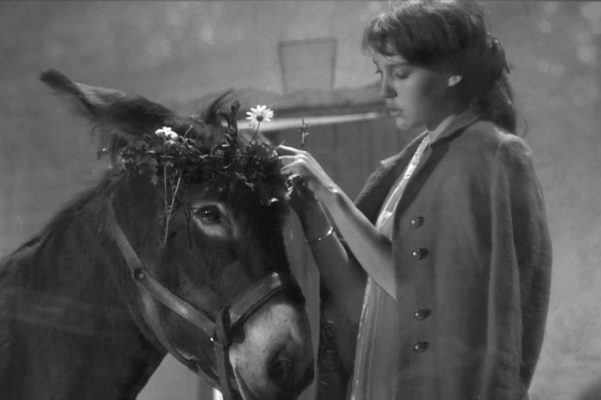On Blu Ray from Mon 29 Apr 2019
It’s decidedly difficult to look at French art house cinema of the 60s and 70s without a certain amount of scorn. What was once bold, novel, and ingenious over 50 years ago has today become the stuff of gentle ridicule; as much as it is still beautiful and inspirational. It’s into such a situation that we find ourselves when looking at the work of master pioneer filmmakers, such as Robert Bresson, in the 21st century.
It’s fair to say that when Au Hasard Balthazar was released, there was little like it in the film world. Bresson’s distinctly unorthodox approach to style and his favouring of unusual shots, was a break from traditional cinematography. His choice to use non-actors as his “models” and to almost drill them into a stupor through interminable takes, is one that has become a favoured technique among some modern directors. The resulting stilted, inhuman, abstracted and distilled version of reality creates an uncanny quality to his work.
The film itself follows the life of Balthazar, a donkey born on an old farm in rural France. The plaything and object of affection for Marie (Anne Wiazemsky), the schoolmaster’s daughter. Over the years, we see him pass through various hands around the small town, always seeming to end up near or in the possession of Marie. During the same time, regularly beaten and abused by the leather jacket-wearing local hoodlum, Gerald (François Lafarge). Gerald delights in his own delinquency, and Marie clings to him as an escape from the confines of her life. She in turn is pinioned into her place by her unflinchingly proud and self-destructive father. But in seeking escape she finds only the lascivious attentions of the creepy rich old winemaker, and the abusive affections of Gerald and his gang. All of which is viewed by the constant deep-pool eyes of Balthazar, who mutely and gently observes all, as he passes through this existence.
It’s a deliberately awkward and often frustrating watch. Bresson’s uncompromising style makes the film unintuitive and frequently somewhat dull to watch. Particularly as the players onscreen are often so flat and strange in their line readings and movements that they seem almost alien. Which could in fact be part of the point.
Much of the films’s longevity and place in the art house canon, is due to the inscrutability of the film, combined with its simple, pure and beautiful imagery. It could be read as an allegory, a comment on the modern versus the traditional, or even the lives of humans viewed by an animal “other.” That said, the sheer impenetrability of it all is a detraction, and frankly, most average viewers would likely turn it off in disgust halfway through. It does however, hold a great deal of fascination for the interested and committed cinephile. To that end, this Criterion Collection edition is certainly one for the enthusiast, but perhaps the enthusiast alone.
